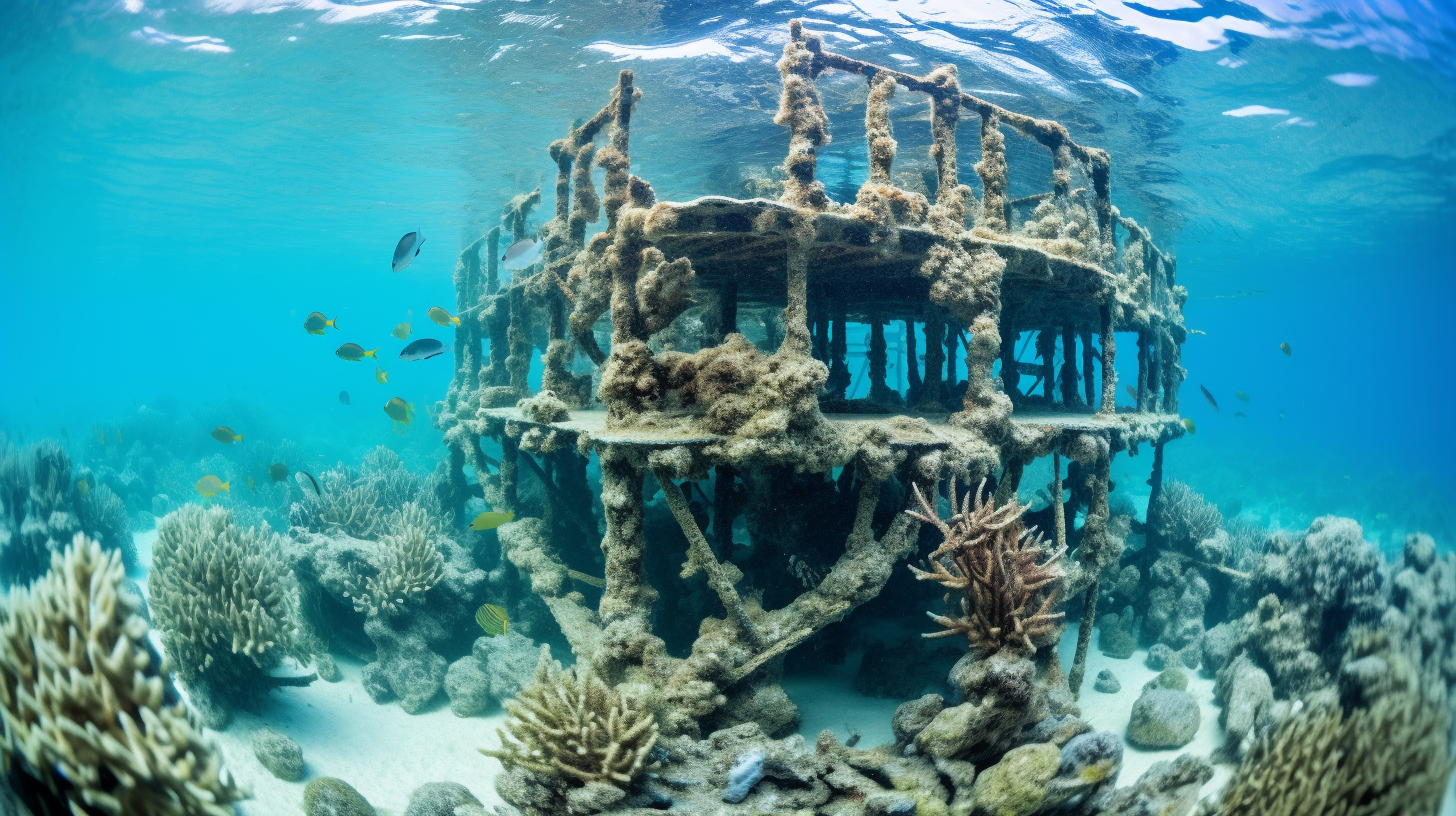Amidst the overcast waters, where clarity and color once danced together in vibrant symbiosis, there now lingers a haunting stillness. ‘Ghosts of Coral Reefs’ is not just a whimsical metaphor but a somber reality in which skeletal remains of what once was a bustling underwater city lay barren. Sunken into oblivion, these ecosystems, deteriorated and bleached, embody the resilience of nature amidst the ruins.
In this abyssal world where vitality is swept away leaving only bleached remains behind, one can’t help but wonder – where has the resplendent life gone? These reefs, once brimming with an abundance of life, now serve as stark memorials of environmental neglect. They stand as a warning, echoing silence where there once was the symphony of underwater life. The bleaching of corals, a paling eerily reminiscent of a ghost’s visage, is not simply a loss of pigment but a sign of the dying pulse of these critical ecosystems.
Scientists warn that coral reefs support quarter of all marine species, serving as the cornerstone for marine biodiversity. Yet, driven by the relentless force of climate change and human interference, these ecological powerhouses are crumbling. Spikes in sea temperatures, rampant pollution, and destructive fishing practices have led to a mass mortality event unseen in recorded history. Despite this dire portrait, amidst the calcified branches and lifeless polyps, a flicker of life occasionally emerges. Hardy species adapt, displaying a tenacity to cling to existence against relentless adversity.
Dive deeper, and one will discover pockets of resistance and adaptation. These outposts of survival, although few and far between, offer glimmers of what used to be and what might still be salvaged. Resilient species of corals shift their symbiotic algae to types that can withstand warmer waters. Innovative restoration projects, like the Coral Ark Initiative, aim to replant vibrant nurseries amidst the desolation, endeavoring to rekindle the life force of these marine wonders.
Yet, we face an unnerving question: Are we merely delaying the inevitable? Is the staunch resilience of these organisms enough to combat the behemoth of change we have set in motion? While restoration offers hope, there’s a looming sense of Sisyphean struggle—restoration and conservation fighting against an ever-increasing tide of destructive, climatic changes.
In our hands, we hold a paradox of power and impotence. The capability to restore and conserve is palpable, yet dwarfed by the scale of destruction already unleashed. The image of a flourishing reef teeming with vibrant life clashes agonizingly with the visage of our ghostly reality. In the face of such despair, there exists a call to action, a plea in the graveyard of corals to steer the narrative away from the dystopian ecosystem collapse that seems all but certain. For in these ruins, the remnants narrate a story—a dire prophecy we still have the slim hope to rewrite.
The past may be inscribed in the stones of the ancients but let it not govern the fate of our oceans for eternity. It’s time to perceive the haunting of the corals not just as a final eulogy but also as a potent, despairing summon to action. A call from the depths, urging us to mend what has been fractured—before the resilience wanes and whispers of recovery fade.
In this elegy of the seas, the ghosts of coral reefs may yet resurrect through our endeavors or remain eternal phantoms in the aquatic archives of the world’s history. The canvas of the future is bleak, but within it, we search for brushstrokes of redemption, hoping against the foreboding backdrop to paint living, breathing seascapes once more. Even in amidst the ruins, there’s a resilience that begs to be recognized—and possibly, a pathway to a less dystopian future. The question remains, are we listening?
